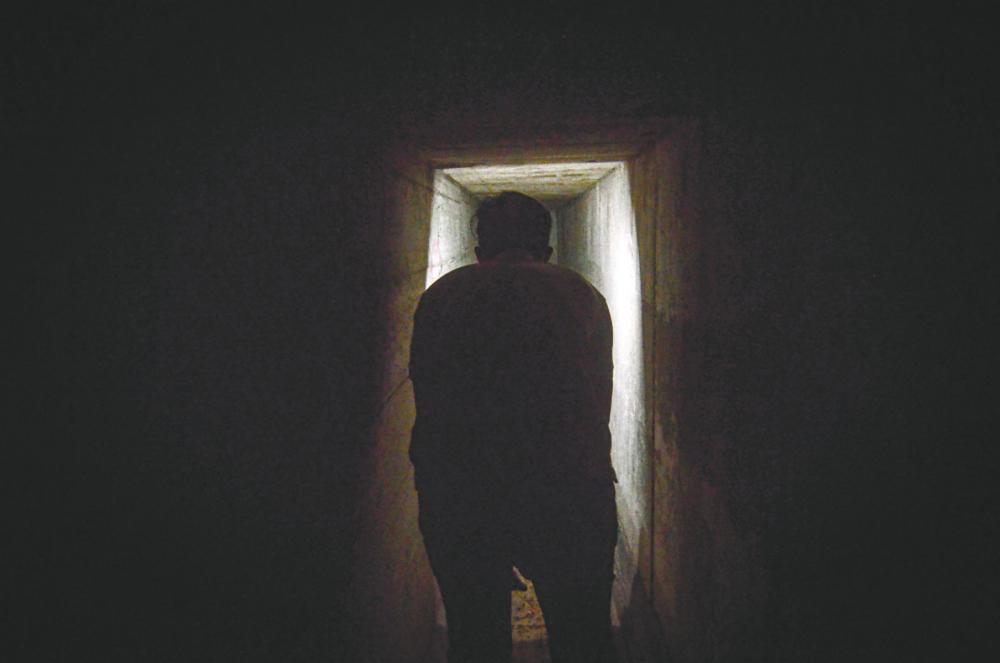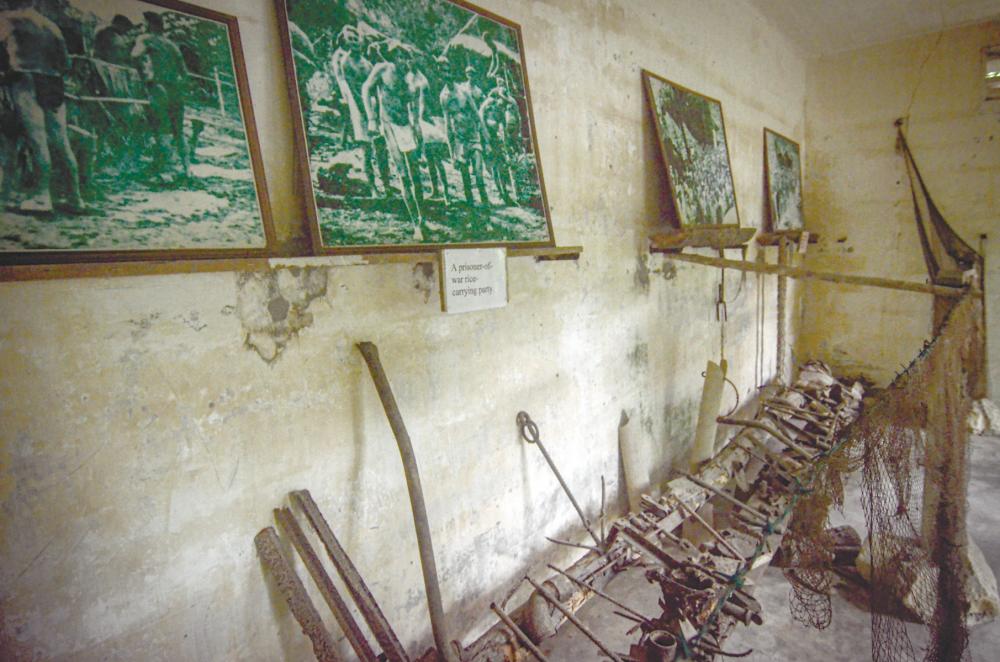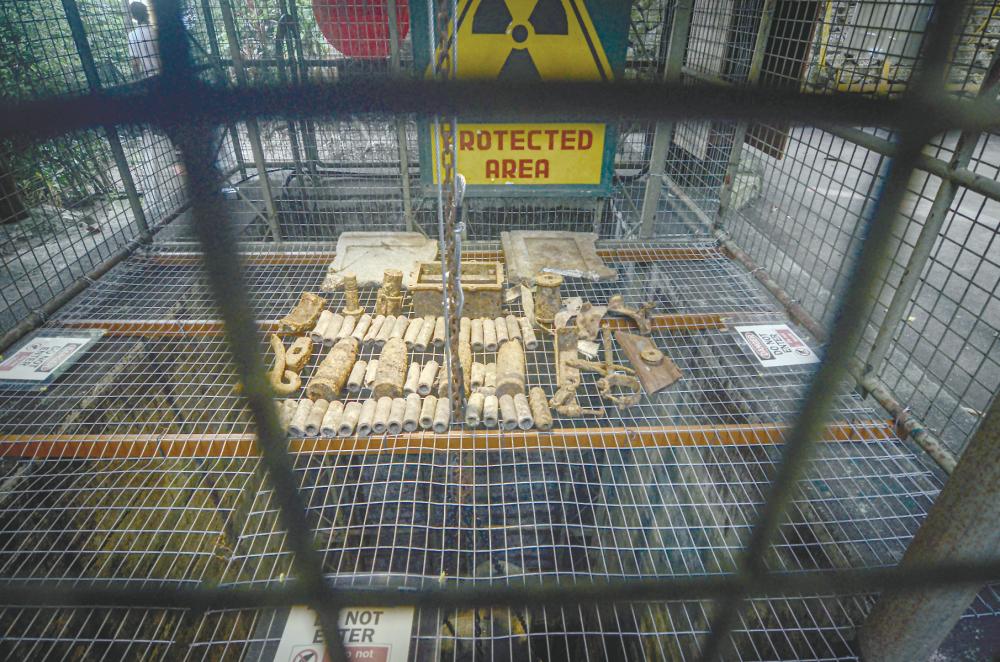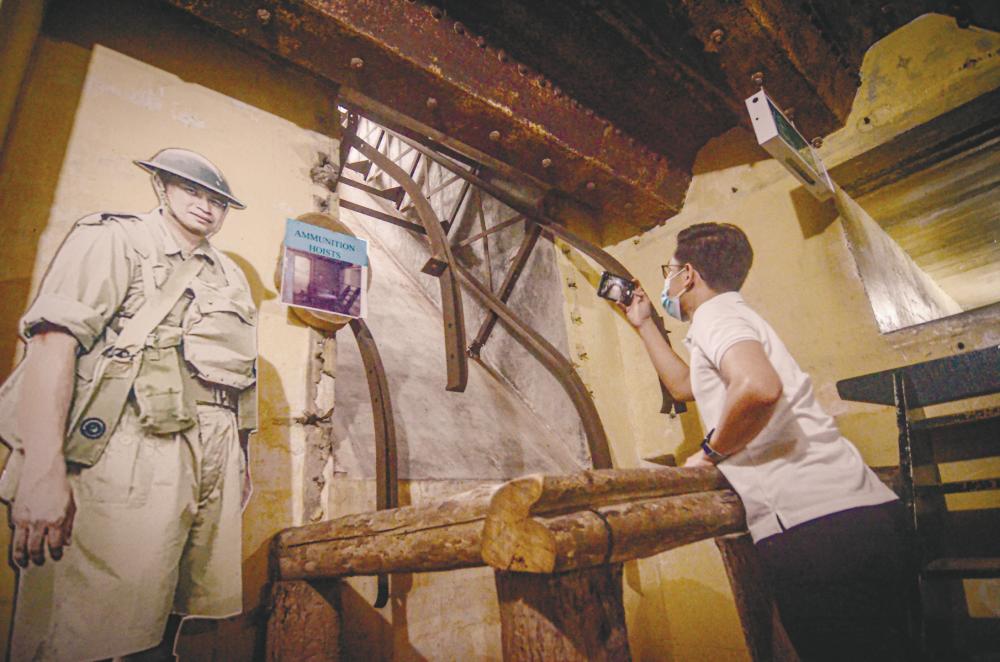The Penang War Museum’s prime seafront hillside location in Batu Maung affords a magnificent 320-degree view of the Strait of Malacca.
Originally a military fortress built by the British in the 1930s, its scenic location, however, is just a fleeting distraction for visitors.
Just step onto the museum grounds – sprawled over a 7.83-hectare site – and visitors will find themselves transported to a section of this nation’s dark past that witnessed untold brutality, gruesome killings and torment many years ago.
The site of the museum owes its spooky feel to the Japanese Occupation (1942-1945) during which the fortress was seized by Japanese troops who turned it into a detention centre for their prisoners of war.
The Penang War Museum, which opened its doors to the public in 2002, is actually a living museum and most of the relics and structures that were part of the fortress have been restored to their original “glory”.
Visitors can explore its underground tunnels, bunkers and barracks, among others, while the sight of the guillotine stand and gallows is bound to send shivers down their spine.
Little wonder that the National Geographic Channel, which filmed a documentary series on the museum titled “I Wouldn’t Go in There” in 2013, labelled it as one of Asia’s most haunted sites. In 2010, the History Channel featured the museum in a documentary titled “Best of Malaysia’s Hidden Cities”.
Grim reminder
Interestingly, the fortress, which was abandoned in 1945 after the Japanese retreated from Malaya, would have remained long forgotten and in ruins if not for the efforts of local history buff Johari Shafie who took it upon himself to seek the necessary approval to restore the site and turn it into a war museum.
Johari, founder and owner of Penang War Museum, came across the ruins in 1986 when he served as an officer at the Malaysian Tourism Promotion Board’s (now known as Tourism Malaysia) Northern Region office.
His deep interest in the nation’s history and heritage compelled him to seek the federal government’s permission to restore the site into a World War II heritage product in the form of a museum.
“It (museum) is a grim reminder to Malaysians, especially the younger generation, not to ignore the nation’s history and ensure that it (wartime atrocities) does not repeat,” he said.
It took Johari a good seven years before he managed to secure the approval of the federal and state governments to proceed with his plan to establish the war museum.
“I used my own funds from my company and also from my family to develop the museum. Initially, I spent about RM5 million but over time the entire restoration project cost RM22 million,” he told Bernama.
Clearing the 7.83-hectare site of booby traps, bushes and undergrowth took a few years as the area had been left abandoned for over 60 years.
“We tried to preserve the original landscape of the fortress. The original footpaths are still here and they have authentic value ... in fact, they can be used as physical evidence in case Malaysia wants to claim war compensation from Britain,” he said.
Delving into the history of the fortress, Johari said it had taken the British about nine years to build it, with the construction work on the structure carried out by prisoners from its colonies. These prisoners had been sentenced to die and were on death row.
The fortress fell to Japanese troops, led by General Tomoyuki Yamashita, on Dec 16, 1941, which was eight days after the Japanese entered Malaya through the Thai border.
“The Japanese were determined to take over the fortress because at that time the British possessed two cannons that were specially shipped into this country from Arsenal in England. The weapons each had a diameter of 15 inches and was 40 feet long and had a shooting range of up to 36 kilometres,” he said.
Johari also explained that not many people knew that the anti-radar and communication equipment in the underground war room in the restored museum is still functioning.
Professional Malay soldiers
Delving further into the fortress’ history, meanwhile, also unravelled the existence of a group of Malay professional soldiers who were experts in handling heavy weaponry during the British colonial era.
Johari said two British soldiers who had served in Malaya – James Tait and Bob Smith – who he invited for the Penang War Museum’s opening ceremony in 2002 – had given him an account of the professional Malay soldiers who had served the British.
“They used to be housed at Barrack No. 18 (at the fortress) where you can see the inscription ‘Malay OR1A’. 1A refers to the artillery unit while OR refers to ‘other rank’,” he explained.
He said the Malay soldiers were actually the descendants of Malays who were expelled to other British colonies for rebelling against colonial rule.
“Over there (in the British colonies where they were expelled to), they got married and their descendants from the second and third generations were brought back to Malaya to serve as professional soldiers. They only spoke English but practised Islam,” said Johari.
Grim happenings
When the Japanese took over the fortress, they used it as a site to detain, interrogate and torture prisoners of war.
The guillotine they used to execute prisoners still remains and there is also a room with one of its walls riddled with bullet holes. Indeed, its dark and grisly past has casts a pall of horror over the fortress.
And, there is no shortage of ghostly experiences either. Some museum workers and visitors claimed that they have heard the sound of marching feet and caught a whiff of perfume and at times kerosene. Some even claim to have seen mysterious figures lurking on the fortress grounds.
Johari said while clearing works were going on at the site, he came across 5,000 rifles that were used by the Japanese soldiers, as well as human bones and underground tunnels and lockups.
“It was at this fort where their prisoners of war were tortured and killed. It was also a transit point for prisoners from China, Indo-China, south Thailand and Malaya who were classified according to their size, gender and expertise.
Some of these prisoners were later despatched to Kanchanaburi in Thailand to construct the infamous death railway while others were inducted as forced labour or to participate in kamikaze (suicidal attacks),” he said.
According to Johari, a building inside the fortress that housed the generator was used as a torture chamber by the invading Japanese soldiers.
“Even now this building evokes a sense of horror among visitors,” he said.
He said while the 30.5-metre-deep underground tunnel in the fortress was used by the British to store bullets and weapons, the Japanese soldiers used it for a far darker purpose – as the “venue” to hang their prisoners of war to death and then behead their bodies.
“The heads of the unclaimed bodies would be displayed along the main roads to inject fear into the local people during that time,” he added.
Johari said he made arrangements to bury the human bones – belonging to prisoners of war and others killed by the Japanese, which was discovered at the fortress site in an undisclosed area before the museum was opened to the public.
The Penang War Museum is open daily from 9am to 6pm. For Malaysians, the entrance fee is RM22 per adult and RM12 per child. Foreigners have to pay RM38 (adults) and RM17 (children).
The museum also offers a group package for those who wish to tour the museum at night but the group must have at least 40 participants. For more information, contact 016-421 3606. – Bernama












